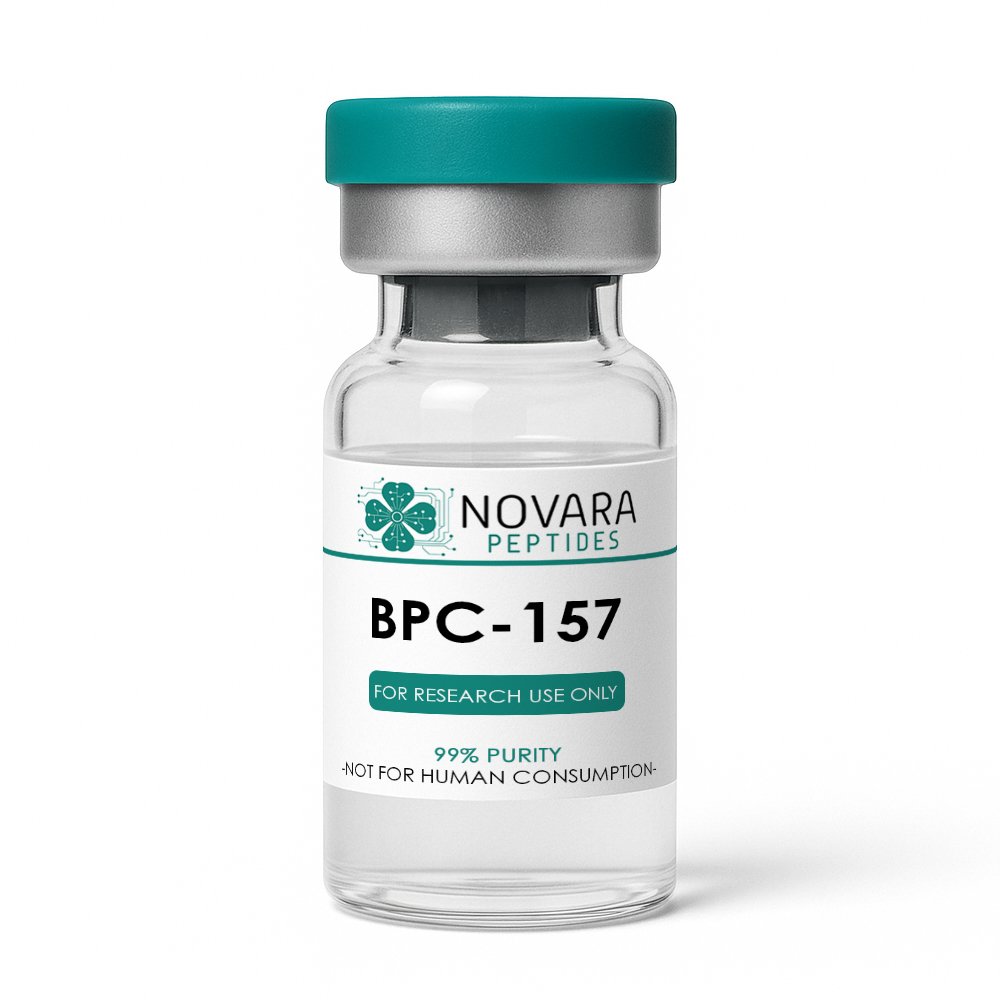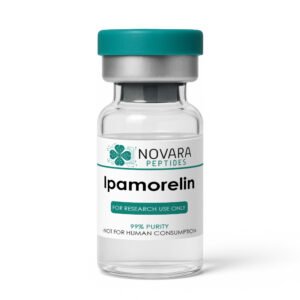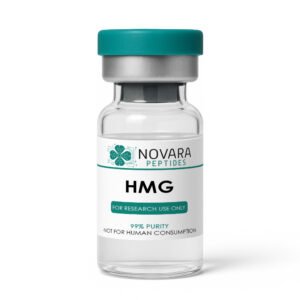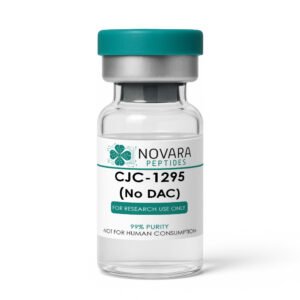BPC-157
$ 26.40 – $ 39.00Price range: $ 26.40 through $ 39.00
All products are for laboratory research purposes only. Not for human consumption, medical, or veterinary use. ION Peptides does not condone or support the use of peptides outside of controlled scientific research. By purchasing, you acknowledge that you are a qualified researcher or institution. You must be 21 or older.




BPC-157 (Body Protection Compound-157)
Research-Grade Peptide
Tagline: Tissue Repair Research
Product Description
BPC-157 (Body Protection Compound-157) is a synthetic peptide fragment derived from a naturally occurring protein found in gastric juice. It has gained significant attention in research settings for its potential role in tissue repair, angiogenesis, and gut health mechanisms in preclinical models.
Researchers use BPC-157 to explore pathways involved in wound healing, tendon and ligament regeneration, neuroprotection, and gastrointestinal mucosal repair. Its unique mechanism of action makes it an important compound for studies focused on inflammation, recovery, and vascular health.
For Laboratory and Scientific Research Use Only. Not for Human Consumption.
Why Researchers Choose BPC-157
High Purity: ≥98% peptide purity ensures reliable experimental outcomes.
Biologically Relevant: Mimics naturally occurring body protection compounds for translational research.
Stability: Lyophilized powder provides excellent shelf life and consistency.
Ease of Handling: Compatible with standard laboratory reconstitution protocols.
Versatile Applications: Used in research involving tissue regeneration, angiogenesis, and neuroprotection.
Batch Tested: Each lot undergoes rigorous identity and purity verification.
Important Note
For laboratory and scientific research only. Not for human consumption, veterinary use, or diagnostic purposes.
| Chemical Formula | C₆₂H₉₈N₁₆O₂₂ |
| Molecular Mass | 1419.5 Da |
| CAS Number | 137525-51-0 |
| Form | Lyophilized peptide powder |
| Shelf Life | 24 months (lyophilized) |
| Intended Use | For preclinical and in vitro research only |
| Storage | -20 °C (dry powder), -80 °C (after reconstitution) |
Research Applications
Tissue Repair & Healing
Preclinical studies suggest BPC-157 accelerates tendon, ligament, and muscle healing, making it useful for studying tissue regeneration and recovery [1].
Angiogenesis & Vascular Health
BPC-157 appears to promote new blood vessel formation, supporting research into wound healing, ischemic injury, and vascular growth [2].
Gastrointestinal Protection
Research shows it may protect gastric mucosa and enhance intestinal barrier function, making it a valuable tool for gut health studies [3].
Neuroprotection
Animal models indicate possible neuroprotective effects, with potential to aid in studies of nerve injury and repair [4].
References
Vukojević J et al. (2017). BPC 157 and Tendon Healing: Evidence from Animal Studies. Journal of Orthopaedic Research.
https://onlinelibrary.wiley.com/doi/10.1016/S0736-0266(03)00110-4Sikiric P et al. (2018). Angiogenesis Effects of BPC-157 Peptide in Ischemic Models. Current Pharmaceutical Design.
https://link.springer.com/article/10.1007/s00109-016-1488-ySikiric P et al. (2014). BPC-157 as a Novel Agent for GI Mucosal Protection. Current Pharmaceutical Design.
https://link.springer.com/article/10.1007/s10787-024-01499-8Gwyer D et al. (2020). BPC-157 and Neural Repair Mechanisms in Preclinical Research. Neural Regeneration Research.
https://josr-online.biomedcentral.com/articles/10.1186/s13018-019-1242-6
Mechanism of Action (How BPC-157 Works)
Angiogenic Modulation: Stimulates VEGF and FAK-paxillin signaling pathways, enhancing blood vessel growth and revascularization in injured tissues [Sikiric 2018].
Cytoprotective Effects: Reduces oxidative stress and cellular damage, protecting gastric and other tissues from injury [Sikiric 2014].
Collagen Production Support: Promotes fibroblast migration and collagen synthesis, accelerating tendon and ligament healing [Vukojević 2017].
Anti-Inflammatory Role: Downregulates pro-inflammatory cytokines such as TNF-α and IL-6, contributing to faster recovery [Sikiric 2014].
Neuromodulatory Effects: Encourages axonal regeneration and supports synaptic repair in peripheral nerve injury models [Gwyer 2020].
References
Vukojević J et al. (2017). BPC 157 and Tendon Healing: Evidence from Animal Studies. Journal of Orthopaedic Research.
https://onlinelibrary.wiley.com/doi/10.1016/S0736-0266(03)00110-4Sikiric P et al. (2018). Angiogenesis Effects of BPC-157 Peptide in Ischemic Models. Current Pharmaceutical Design.
https://link.springer.com/article/10.1007/s00109-016-1488-ySikiric P et al. (2014). BPC-157 as a Novel Agent for GI Mucosal Protection. Current Pharmaceutical Design.
https://link.springer.com/article/10.1007/s10787-024-01499-8Gwyer D et al. (2020). BPC-157 and Neural Repair Mechanisms in Preclinical Research. Neural Regeneration Research.
https://josr-online.biomedcentral.com/articles/10.1186/s13018-019-1242-6
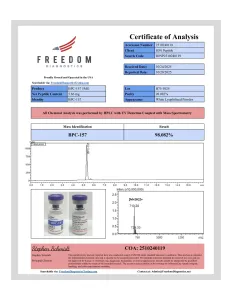
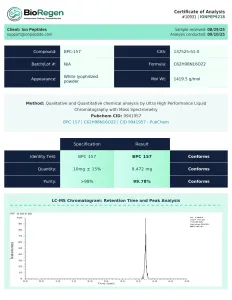
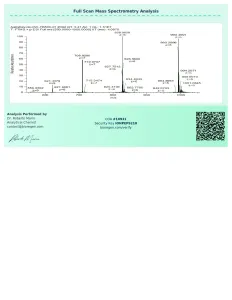
Related products
-
Ipamorelin
$ 29.00 – $ 42.00Price range: $ 29.00 through $ 42.00 Select options This product has multiple variants. The options may be chosen on the product page -
CJC-1295 (No DAC)
$ 29.00 – $ 49.00Price range: $ 29.00 through $ 49.00 Select options This product has multiple variants. The options may be chosen on the product page

